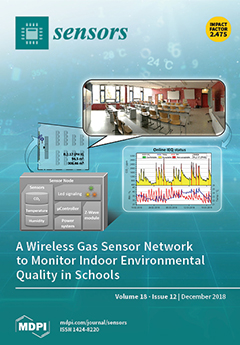Open AccessArticle
Validation of an Inertial Sensor Algorithm to Quantify Head and Trunk Movement in Healthy Young Adults and Individuals with Mild Traumatic Brain Injury
by
Lucy Parrington 1,2,* , Deborah A. Jehu 1,2, Peter C. Fino 1,2,3
, Deborah A. Jehu 1,2, Peter C. Fino 1,2,3 , Sean Pearson 4, Mahmoud El-Gohary 4
, Sean Pearson 4, Mahmoud El-Gohary 4 and Laurie A. King 1,2,5
and Laurie A. King 1,2,5
1
Department of Neurology, Oregon Health & Science University, 3181 S.W. Sam Jackson Park Rd., Portland, OR 97239, USA
2
VA Portland Health Care System, 3710 SW US Veterans Hospital Road, Portland, OR 97239, USA
3
Department of Health, Kinesiology and Recreation, University of Utah, 250 S 1850 E, Salt Lake City, UT 84112, USA
4
APDM Wearable Technologies, Portland, OR 97201, USA
5
National Center for Rehabilitative Auditory Research (NCRAR), VA Portland Health Care System, 3710 SW US Veterans Hospital Road/P5, Portland, OR 97239, USA
Cited by 17 | Viewed by 5474
Abstract
Wearable inertial measurement units (IMUs) may provide useful, objective information to clinicians interested in quantifying head movements as patients’ progress through vestibular rehabilitation. The purpose of this study was to validate an IMU-based algorithm against criterion data (motion capture) to estimate average head
[...] Read more.
Wearable inertial measurement units (IMUs) may provide useful, objective information to clinicians interested in quantifying head movements as patients’ progress through vestibular rehabilitation. The purpose of this study was to validate an IMU-based algorithm against criterion data (motion capture) to estimate average head and trunk range of motion (ROM) and average peak velocity. Ten participants completed two trials of standing and walking tasks while moving the head with and without moving the trunk. Validity was assessed using a combination of Intra-class Correlation Coefficients (ICC), root mean square error (RMSE), and percent error. Bland-Altman plots were used to assess bias. Excellent agreement was found between the IMU and criterion data for head ROM and peak rotational velocity (average ICC > 0.9). The trunk showed good agreement for most conditions (average ICC > 0.8). Average RMSE for both ROM (head = 2.64°; trunk = 2.48°) and peak rotational velocity (head = 11.76 °/s; trunk = 7.37 °/s) was low. The average percent error was below 5% for head and trunk ROM and peak rotational velocity. No clear pattern of bias was found for any measure across conditions. Findings suggest IMUs may provide a promising solution for estimating head and trunk movement, and a practical solution for tracking progression throughout rehabilitation or home exercise monitoring.
Full article
►▼
Show Figures






